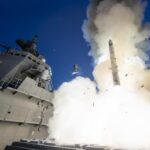
NASA could miss an important deadline for a test launch of its Space Launch System (SLS) because it is not on path to reach a December 2017 test flight at the required confidence level of 70 percent, a key performance metric, according the Government Accountability Office (GAO). GAO said Wednesday in a report (GAO-14-631) NASA has not established an executable business case that matches the SLS program’s cost and schedule resources, which GAO calls a best practice for establishing a…













